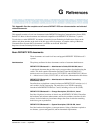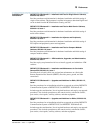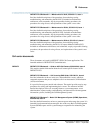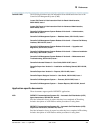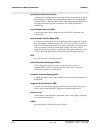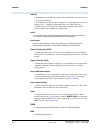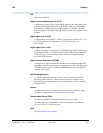
asynchronous data transmission Glossary
Administration for Network Connectivity
CID: 77730 555-233-504 — Issue 1 — April 2000
466
asynchronous data transmission
A method of transmitting data in which each character is preceded by a start bit
and followed by a stop bit, thus permitting data characters to be transmitted at
irregular intervals. This type transmission is advantageous when transmission is
not regular (characters typed at a keyboard). Also called asynchronous
transmission.
Asynchronous data unit (ADU)
A device that allows direct connection between RS-232C equipment and a
digital switch.
Asynchronous Transfer Mode (ATM)
A connection-oriented, digital service optimized for fiber-optic lines at speeds
up to 622.08 mbps. ATM networks set up a virtual circuit (virtual connection)
between the transmitter and the receiver before sending any data. Data is then
sent in a continuous stream of fixed-length, 58-byte cells, each of which
contains a 48-byte payload and a 5-byte header. The header contains the virtual
circuit number that identifies the pre-negotiated path through the network.
ATM
See Asynchronous Transfer Mode (ATM)
Audio Information Exchange (AUDIX)
A fully integrated voice-mail system. Can be used with a variety of
communications systems to provide call-history data, such as subscriber
identification and reason for redirection.
Automatic Alternate Routing (AAR)
A feature that routes calls to other than the first-choice route when facilities are
unavailable.
Automatic Route Selection (ARS)
A system for automatically routing telephone calls by the least costly route. A
feature of the Lucent DEFINITY Enterprise Communications Server.
auxiliary trunk
A trunk used to connect auxiliary equipment, such as radio-paging equipment,
to a communications system.
AWOH
See Administration Without Hardware (AWOH).




